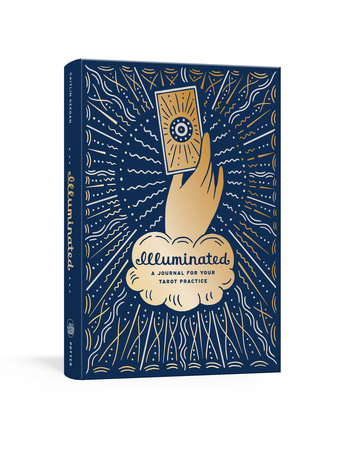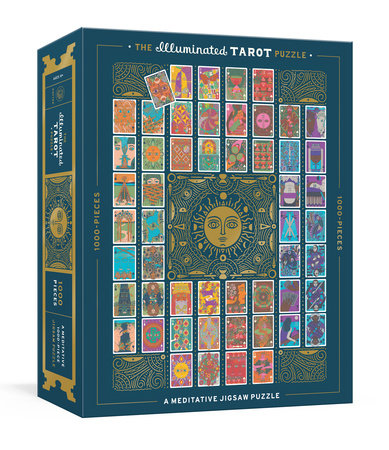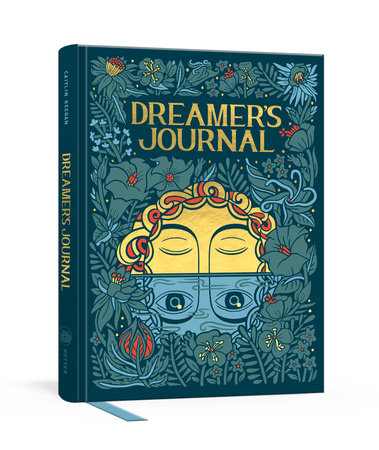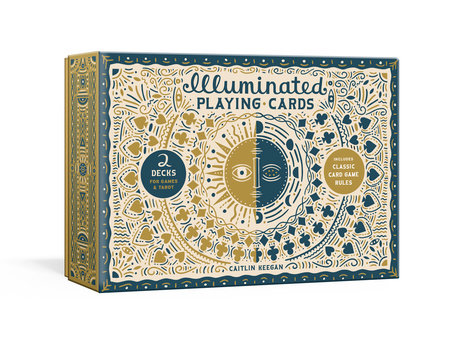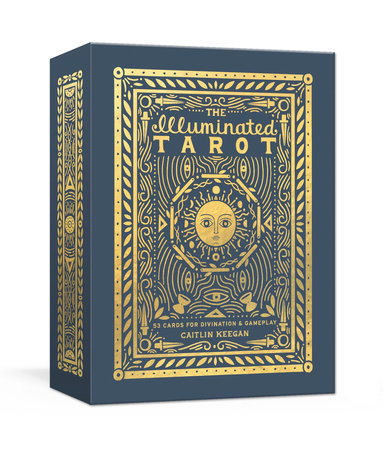Excerpt
Illuminated
Tarot cannot predict the future, but it sparks new ideas and clears new paths.A regular practice helps us develop intuition, set intentions, make decisions, and clarify perspectives.
The history of tarot is long, varied, and somewhat mysterious. Tarot-like games and divination systems have appeared across cultures and regions beginning as early as the ninth century (or as “recently” as the fifteenth century, depending on which scholars you consult). Tarot’s unique symbolism is constantly being reinterpreted for new audiences and changing times, making every deck a new dialect of an old language.
My own interest in tarot started in middle school. Interpreting the cards felt like putting together an intriguing visual puzzle. I continued to be interested in tarot well into art school, where I studied illustration and even created a tarot-based game. Years later, I was seeing a therapist for the first time, and, in an early session, she asked me to talk about my own artwork as a way to access deeper issues and feelings. I understood then that image interpretation was one way of clarifying and externalizing unacknowledged emotion. This experience led me to think about tarot in a psychological context. I’ve since learned that some therapists do, in fact, use tarot as a tool in their sessions.
Up to this point, tarot had fascinated me, but I could never fully grasp what to do with it. When I realized tarot could be used for something other than predicting the future, I committed to learning more about it. At the same time, therapy had become an important agent of change in my life, and I wondered if I could contribute to therapeutic practice through my work as an illustrator. The process of studying tarot inspired me to create
The Illuminated Tarot: a fully illustrated tarot and playing card deck that is designed to be read intuitively.
Art is both a universal language and a highly personal one. Tarot imagery harnesses this dichotomy, making a tarot deck an accessible and endlessly adaptable tool. In his book
Tarot and Psychology, Arthur Rosengarten compares reading tarot to analyzing a dream. The advantage that tarot has over dream interpretation, he says, is that all of the imagery is right in front of us; it does not disappear when we wake up. Like dream analysis, tarot readings hint at things just below the surface; intuitive thoughts that have not yet broken through to our consciousness. When I read for myself, I usually feel that the cards either reaffirm something I already know or point me toward a doorway I had not considered. A tarot deck can be a powerful tool for getting in touch with your intuition and writing about the cards amplifies that power. A tarot journal is a record of growth and change over time; it is a reminder of where we’ve been and a map to where we’re going. I hope this journal will help you use tarot for affirmation and discovery.


